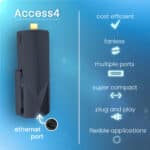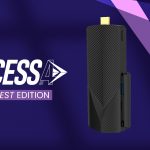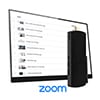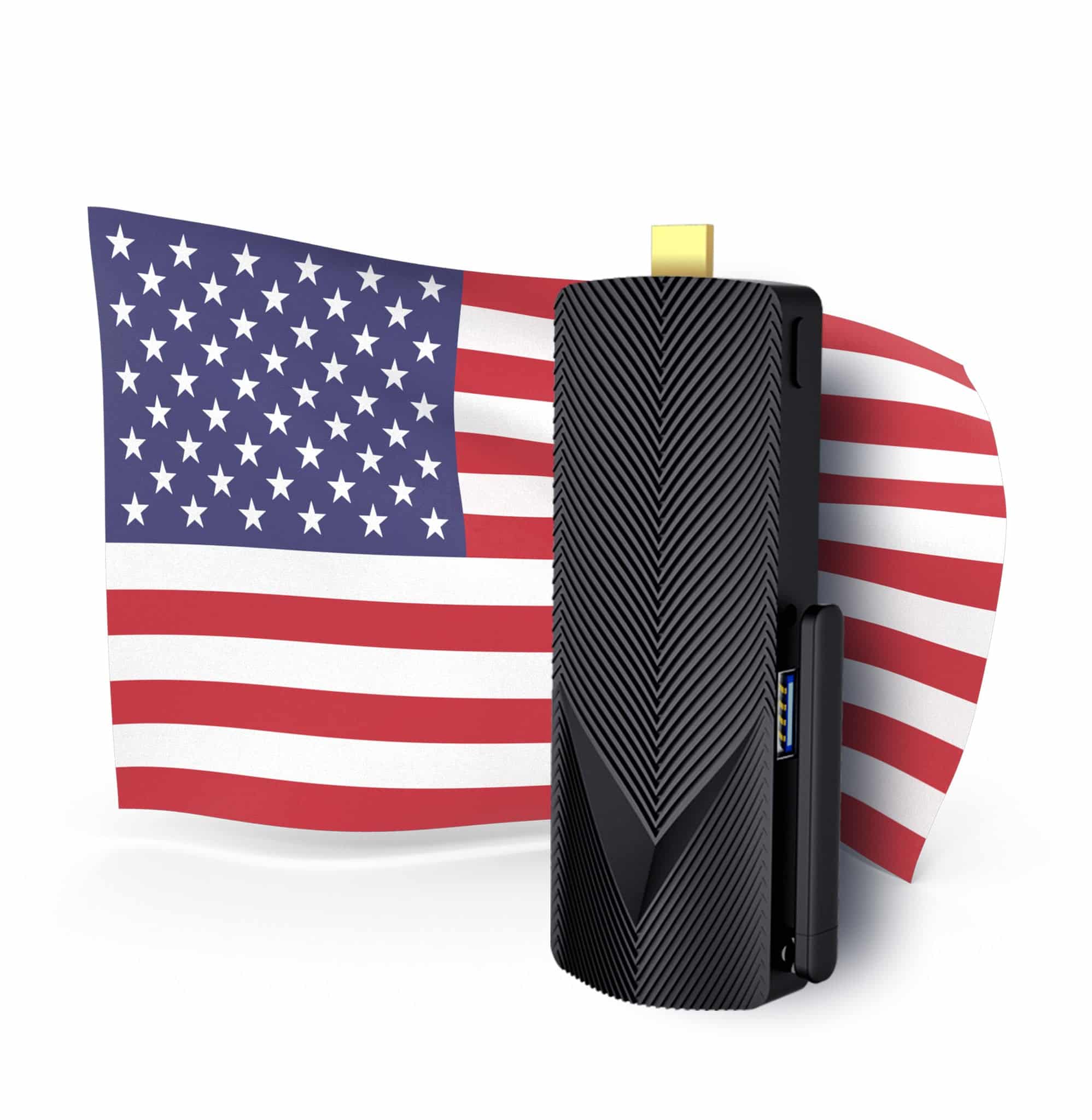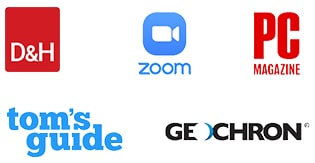Mini PCs have been used in many different industries over the last few years. From movie streaming and gaming to remote work and digital signage integration, mini PCs are compact hardware discreetly paired with daily everyday technology.
What is a mini PC?
Mini PCs are small and portable computers that are designed to be compact, lightweight, and multifunctional to perform a variety of tasks. Most of them come equipped with powerful processors, ample storage space, and high-quality graphics capabilities.
These small devices can have the same features and capabilities as large computers, or even be more powerful in some cases. Additionally, mini PCs provide a variety of USB and HDMI ports, allowing users to connect multiple peripherals and display devices. Users can benefit from its adaptability in a wide range of situations, making it ideal for both professional and personal use due to its easy integration into existing setups
Key components of a mini PC
The elements of a mini PC are similar to those of a computer, but with certain distinctions. Let’s take a look at the key components of a mini PC:
Operating system: Mini PCs often come equipped with popular operating systems such as Microsoft Windows, macOS, and Linux. The operating system allows users to run software applications.
Memory: The memory, also known as RAM (Random Access Memory), temporarily stores data that the processor needs to access quickly.
Storage: These devices also come with solid-state drives (SSDs) or hard disk drives (HDDs) for storage. SSDs are faster and more reliable, while HDDs offer larger storage capacities at a lower cost.
Computer Ports: Mini PCs typically include various ports, such as USB, HDMI, Ethernet, and audio jacks, to connect peripherals like keyboards, monitors, and speakers. They may also support wireless connectivity options like Wi-Fi and Bluetooth.
One of the most remarkable characteristics of mini PCs is that they are fanless, resulting in silent operation, less risk of technical issues, and space savings. However, as they are highly customizable, users can add a fan as needed.
Types of mini PCs
There are many mini PC options available on the market; they include barebones systems, which come with a basic set of components and allow users to customize and add their own hardware, and pre-built mini PCs, such as mini PC sticks, which come fully set up and ready to use.
Barebones systems are a popular choice for tech-savvy users who prefer to have control over the components and performance of their mini PC. On the other hand, pre-built mini PCs like mini PC sticks offer a convenient plug-and-play solution for those who prioritize simplicity and ease of use.
Mini PC applications
Mini PCs have numerous different applications; the most popular include:
Home entertainment: Mini PCs can be used as media streaming devices to access streaming services such as Netflix, Amazon Prime Video, Disney, and YouTube. With a mini PC, you can stream TV shows, movies, and music. You can connect a mini PC to your television and enjoy an outstanding and customizable home theater experience.
These devices may be used as cloud gaming consoles, allowing users to play their favorite video games on a smaller device while having the same experience as on a game console or desktop computer. Additionally, mini PCs with connections to the internet allow you to use web browsing to access websites and social media.
Digital Signage:. Their versatility makes them an ideal choice for businesses looking for a compact device for digital signage. Mini PCs are able to run digital signage software that permits users to exhibit a wide range of content, such as slideshows, videos, images, and plenty more. These devices can handle multiple-screen setups, making it possible for users to connect several screens or monitors to a single mini PC, creating engaging and immersive experiences for menu boards, video walls, and more.
Interactive kiosks: Interactive kiosks are self-service terminals that frequently have touch screens or input devices, allowing users to interact with content, access information, and make purchases. Small computers can be easily settled behind kiosks; they feature the required processing power, memory, and storage to operate kiosks and manage interactive content.
Remote Work: When it comes to remote work, these devices excel at being compact and lightweight, making them easy to transport between different places. When compared to traditional desktop computers, they are far more space-saving and energy-efficient. Furthermore, they can be customized, and despite their small size, they feature the same capabilities as conventional devices.
IoT (Internet of Things): Small computers are ideal for collecting, analyzing, and processing data from linked devices and sensors. They can be used as edge devices in IoT networks, providing processor power, security, customization, and the connection needed for IoT. Furthermore, mini PCs are built to endure in challenging conditions, such as extreme temperatures, pressure, light, motion, and other circumstances.
Telemedicine: These devices can also be used to provide remote healthcare services. Mini PCs allow healthcare providers to install specialized software to remotely analyze image tests, diagnose patients, and deliver additional treatments. Additionally, it is possible to implement encryption processes to protect patient data and meet telemedicine privacy standards.
Future trends in the world of Mini PC
The future of mini PCs will be defined by the rising demand for small and portable mini PCs due to the fact that people are getting ever more mobile and looking for computing power when they are on the go. Another trend is the integration of artificial intelligence (AI) into mini PCs to improve user interaction, automate tasks, and plenty more.
When it comes to customization, mini PC manufacturers may offer more customization options, making it possible for consumers to customize their devices with additional components, including storage drives, expansion modules, and graphic cards. Energy efficiency will continue to be a focus for mini PC manufacturers, aiming to reduce power consumption.
User needs, innovation, modularity, integration of artificial intelligence, and energy efficiency will surely have a significant role in the future of mini PCs. The wide range of applications for these compact devices might grow even more!
Excited to integrate a mini PC into your setup?
Don’t miss the chance to explore Azulle mini PCs and discover the endless possibilities they offer!





